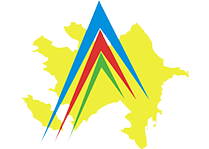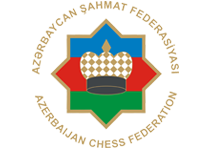General Information
General information
Baku is a capital of the Republic of Azerbaijan. It is one of the largest industrial, scientific and cultural center not only of the country, as well as in the entire region. It is a major port on the west coast of the Caspian Sea, in the southern part of the Absheron Peninsula.
It is a lively and very interesting city, where life does not stop even at night. Over the last ten years, Baku has greatly changed: new multi-storey buildings of shopping centers, hotels and banks harmonize very well with the old buildings. Baku is divided into 11 administrative districts.
 |
 |
 |
 |
 |
 |
Population, language, religion
Baku has always been famous as a multi-ethnic city. The population of the capital of Azerbaijan reflects the ethnic composition of country.
The official language is the Azerbaijani, but historically the Russian language was widespread. In recent years, as the result of the country’s integration into the international community, more and more people, especially young people also know the English language.
Azerbaijan is the Muslim country according to the religious beliefs and due to the recent information, the population of Azerbaijan is more than 9 million people, the believers from other religions also feel comfortable and safe themselves here.
Geographical location and climate of Baku
Baku is located on the western shore of the Caspian Sea, its area is approximately 2,2 thousand square kilometers. The central part of the city go down systematically to the Baku Bay like the amphitheater. Modern Baku stretches far beyond the historical center - Old City (Icheri Sheher). Its new buildings were raised on the hills located along the Baku Bay. In a business center and along the highways, the construction is dense but on the suburbs more sparse. Although in recent years this division is rather conditional, because the population grow, the residential districts and surrounding areas are also actively being built.
The climate is temperate in Baku, with hot summer and low humidity and with mild winter. In January the average annual temperature is +3.4 degree C, and in July +25.8. Autumn is warm, much warmer than spring.
Historical note
According to its territory and the number of population, Baku has been considered one of the biggest cities in the East. In the twelfth century, Baku was one of the major cities of the Shirvanshahs state, sixteenth century - the Safavids state, seventeeth century - the Ottoman Empire, eighteenth century - Baku khanate.
History of Baku dates back centuries, and its name is found in the medieval Byzantine, Arab, Persian and European sources, where Baku was showed as a rich city on the Great Silk Way.
People anciently settled in this territory, which eventually has been crowded by settlements establishing a future city. The reason for this is the physical and geographical conditions of the territory, its location in the center of the intersection of migration and trade routes stretching from north to south and from west to east (the “Silk Way”), climatic conditions, as well as a valuable energy substance, from ancient times appearing on the surface of the earth, and called “naphtha”. Actually it was the first oil of the planet, which began to be produced industrially.
Baku was noted as a city of miracles in ancient scripts and has a very old history. Travelers of ancient times visiting these places used to write loads of articles about amazing flames of Absheron peninsula. The first script about Baku was mentioned in the manuscripts the period of reign of the Egyptian Pharaon Menesa, which dates back to the 3500 years B.C. The archeological findings and scripts on the rocks with the age of at least 12.000 years, found in Absheron and Gobustan are the best proof for the ancient history of Baku. Besides, there are numerous archeological monuments of III-I millenniums B.C. in the outskirts of the Baku, like the Lake Zigh, the residential areas Shuvalan, Mardakan, Binaghady, Amirjan and others. The stone scripts about military camps made around the city of Baku (40 km south of the city) by Roman emperors Pompeus and Lukull during their invasion of Caucasus, written by August Guy Octavian are the best examples for this.
The settlements around Baku also have a very interesting history. Mashtagha is a good example for this as its name related to the tribes of Massagets, which settled here from prehistoric times. The history of the village Turkan is related to the Turkmen tribes proceeding from the opposite shores of the Caspian Sea and spreading over the western coasts of the sea and along Azerbaijan. It is evident that the name of the village is closely related to the name of the ancient tribes of Turkish roots which inhabited this region long ago.
Baruka, Bagavan, Atesh-i Bagavan, Bakukh, Bakuya, Bad-Cuba (Persian - windy), Baku, Baka - the ancient names of Baku city were found in various written sources of antiquity. Byzantine author Priscus Paniysky, who lived in the first half of the fifth century describing the way from Scythia to Midia, informed about the “bursting fire from the sea stone” near Baku. This is the first chronological indication of the lights near Baku. Starting from the ninth century, in Arabic sources for the first time there were words: Baku, Bakukh, Bakuya, Bakuye.
 |
 |
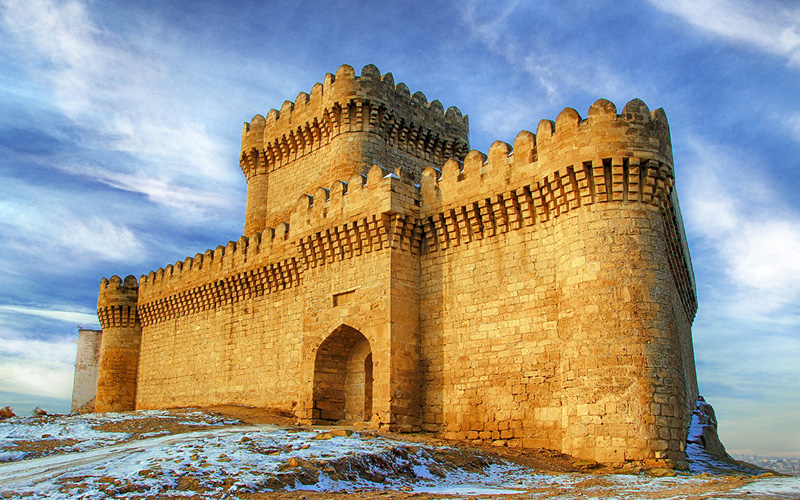 |
According to the Arabic traveler Abu Dulaf, in 10th century there was an income of 720 thousands dirhams obtained from the two oilfields in Baku. Baku, which was located on the intersection of trade roads, played an outstanding role in development of commercial relationships between Western and Eastern countries. If the entire Azerbaijan is a country on the virtual border of Europe and Asia, then Baku-Absheron is one of the main gates for the Europeans wishing to know Asia and Far Eastern countries and their population who aspired to visit Europe. They all passed through Baku where caravans travelling on the Great Silk Way stopped.
At the period when the Shirvanshahs state was established, Baku has become even more important. Baku became famous as a port city since X century. From the end of XI to the beginning of XIII centuries Baku was flourishing. When Qizil Arslan occupied Shamakhy in 1191, Baku temporarily became the capital of Shirvanshakhs’ state. Shivanshahs’ dynasty used to pay special attention to the strengthening of the city. In XII century Baku was surrounded by double walls and a deep trench. The “Maiden Tower” was included into the defense system of the city and Shirvanshakhs’ created a very powerful fleet in the Caspian Sea. Baku became a strategic port on the Caspian Sea, creating additional conditions for its prosperity.
In connection with increasing Baku’s economical and political role in the second half of the XIV century, the Caspian Sea was sometimes referred to as the Sea of Baku (it is mentioned in the map, which was created in 1375, in Catalan language). The historical-architectural buildings preserved up to present days in Baku, like Bukhara Caravanserai (XIV century), Multan (Indian) Caravanserai (XV-XVI centuries) not far from the Maiden Tower and others demonstrate the existence of wide range trade relationship with Eastern countries. During the reign of Shirvanshakh Khalilullah (1417-1462) significant constructions were made in Baku. The complex of Shirvanshakhs’ Palace was constructed at this period.
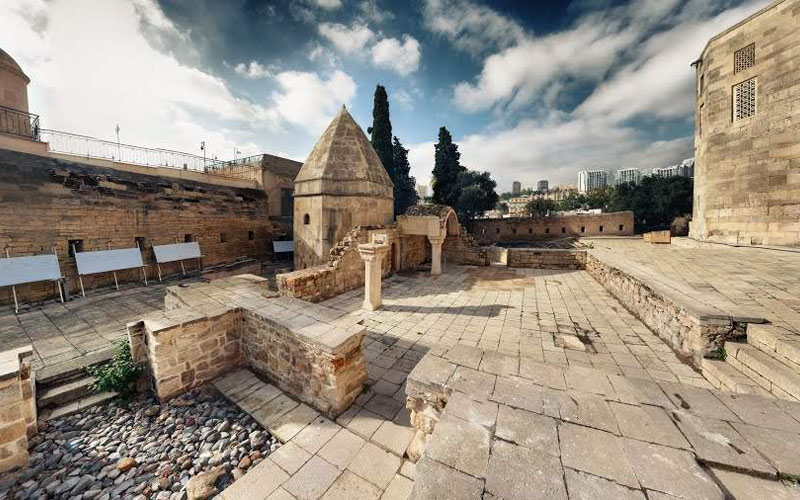 |
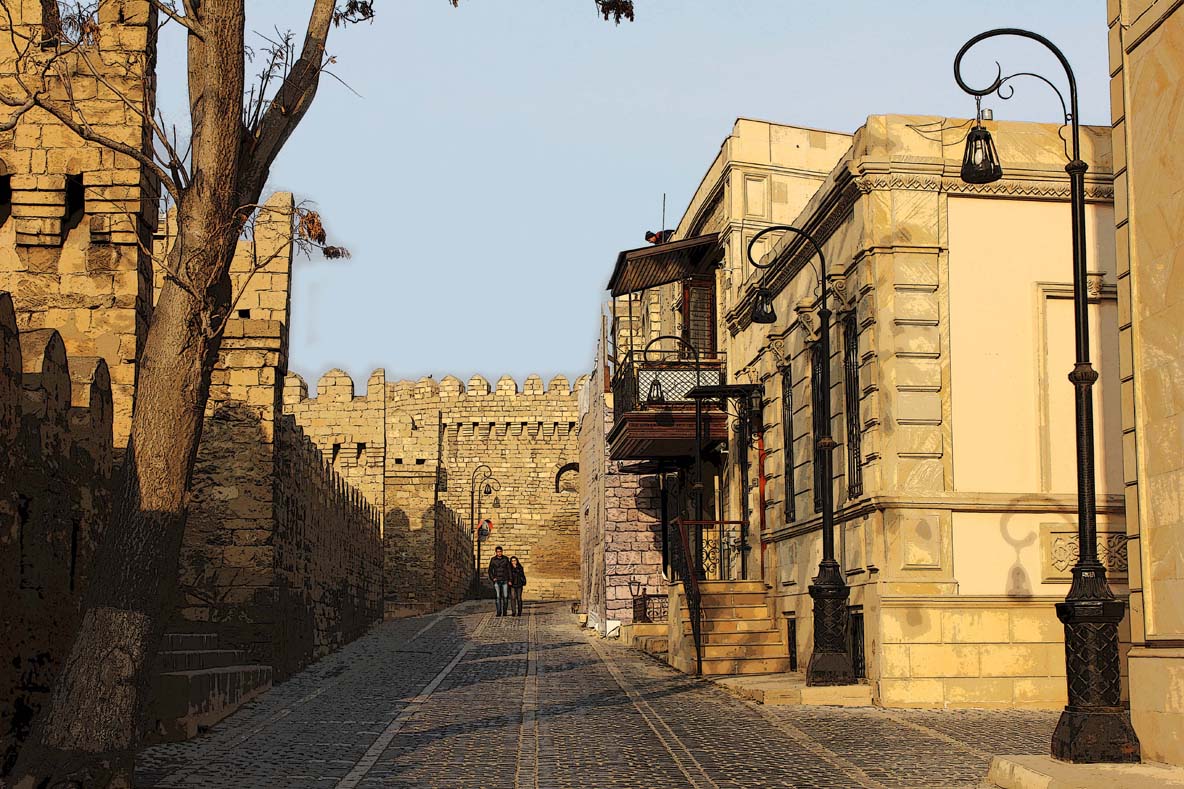 |
 |
In 1501, Shakh Ismail attacked Shirvan and occupied Baku and in 1538 the head of Safavids, Takhmasib annexed Shirvan, including Baku into his empire and it initiated a long-lasting rivalry between two Turkish countries – Ottomans and Safavids. The empowerment of the central government was a strong stimulus to the progress of the city in XVII century. Copper money was produced in Baku during the Safavid reign. The main part of people in Baku and Absheron peninsula were busy with carpet-weaving. In XVI-XVIII centuries craftsmanship, especially carpet-weaving was highly developed. Weaving was also extremely popular in Baku.
The first oil well was mechanically drilled in the Bibi-Heybat suburb of Baku in 1846. Within a short period of time foreign investors appeared in Baku. Among them were the Nobel brothers. By the beginning of the 20th century, almost half of world production was being extracted in Baku. Cultural life flourished in Baku: there were opened theatres and was built the opera house. In those days, it was called the “Paris of the Caucasus.”
On September 15, 1918, the National Army of Azerbaijan Democratic Republic and troops of Ottoman Turkish Islamic Army under the head of the army Nuru Pasha freed Baku from bolshevik, armenian-dashnak and English military groups and Baku became the capital of the first ever democratic government in the Turkish and Islamic world – Azerbaijan Democratic Republic. On 28 April in 1920, the 11th Red Army invaded Baku and the soviet period began in Baku.
In Soviet times, Baku became the capital of the Azerbaijan Soviet Socialist Republic, and has become one of the largest administrative, industrial, scientific and cultural centers of the USSR. During the World War II, Baku was a major strategic hub to fuel military aircrafts and armored vehicles, which was one of the most important factors of the USSR victory. After the war, Baku also remained significant oil-producing region of the USSR.
At that time, the First Secretary of the Communist Party of Azerbaijan SSR Heydar Aliyev and mayor of city Alish Lemberansky played an important role in the modern image of Baku during the Soviet period.
The Republic Palace (now the Heydar Aliyev Palace), State Circus, Baku Seaport building, “Gulistan” Palace, Musical Comedy Theatre, Green Theatre, Baku funicular, as well as the hotels “Moscow”, “Azerbaijan”, “Absheron”, and many other important facilities are products of those years.
In the second half of the 80s, the political and economic crisis was created a new reality in the life of Soviet Azerbaijan and Baku, as a series of tragedies, the community split and led to the disintegration of the Soviet Union. Again in 1991, 18th of October, when Azerbaijan declared its independence, Baku became the capital of the sovereign country of Azerbaijan.
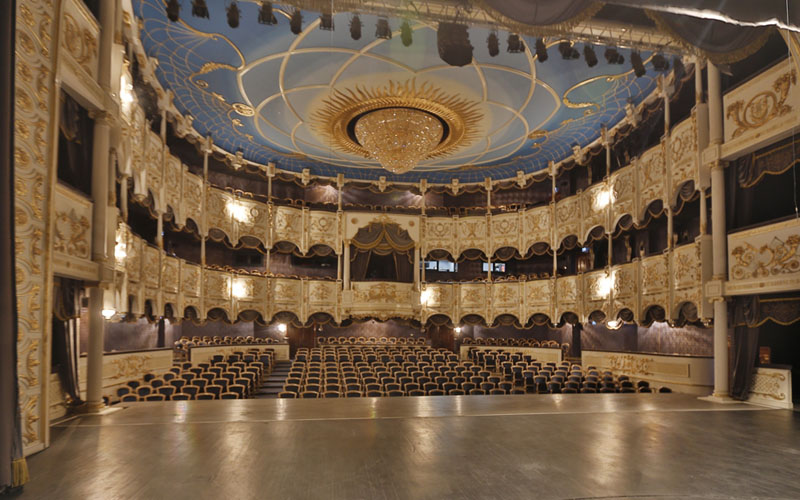 |
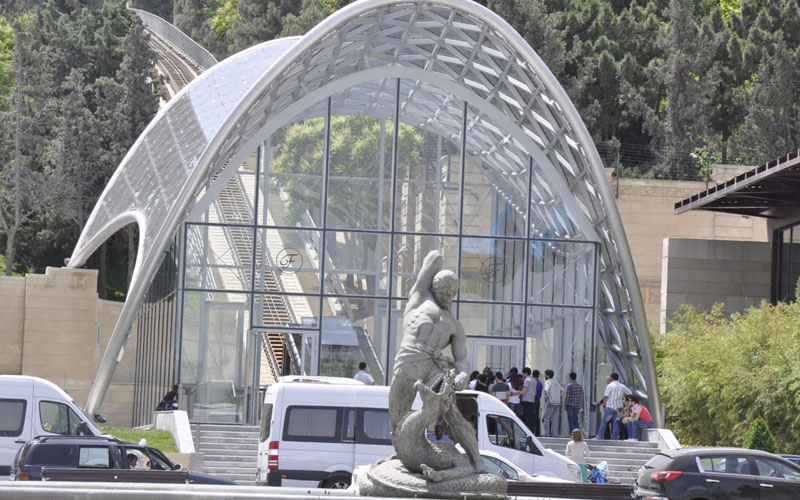 |
 |
Economy of Baku
Since the end of nineteenth century, Baku has become the one of the largest center of oil and gas production. In addition to the oil industry here has developed the weaving industry, also were opened the mechanical plants, tobacco factories, mills, processing plants etc. In the middle of the twentieth century, there were developed petrochemical, machine-building, metal-working industries and the production of construction materials in Baku. At the present, Baku is the scientific-technical and industrial center of the entire the Transcaucasia region. Since the beginning of twenty first century, the military industry, high-tech areas and information technologies have been successfully developed in the capital of Azerbaijan.
Baku is rapidly becoming a tourist city with a rich infrastructure of recreation and entertainment. There are dozens of high quality branded hotels belonging to the world’s largest chain, shopping and business centers, sports and entertainment complexes in Azerbaijan. Just recently, there has been opened the largest European entertainment center Megafun attracting the visitors with hundreds of colorful attractions and gaming machines.
Transport
Baku is a railway and transport hub of Azerbaijan, as well as the largest port in the Caspian Sea. Leading position in freight turnover belongs to commercial seaport. Daily flights to many cities in the world are provided from Heydar Aliyev International Airport. The railway trains leave from Baku to Georgia, Russia, and Iran. The city has an international bus station, underground, public transport, the system of intellectual transport management.
Education, culture and sport
Baku is the cultural and scientific center of Azerbaijan. In 1873, there was established the first national theatre, and in 1908 for the first time in the Muslim East was staged the first opera “Leyli and Majnun”. The first Azerbaijani university and the first library was opened in Baku. More than 30 public and private higher educational establishments are concentrated in the capital of Azerbaijan; therefore, Baku can be called the biggest university town. Not only Baku citizens, as well as the foreign students study in hundreds of different specialties at Baku State University, Azerbaijan State Oil Academy, Azerbaijan Medical University, Azerbaijan Technical University, Azerbaijan State Marine Academy, Azerbaijan Tourism Institute and other universities.
There are also Baku State Circus, many modern concert halls and sports-grounds. On May in 2012, the 57th “Eurovision’’ song contest was held in concert and entertainment complex Crystal Hall in Baku (www.eurovision.tv)
Since 2002, Baku has hosted 36 major sporting events and selected to host the 2015 European Games. Baku is also to host the fourth edition of the Islamic Solidarity Games in 2017.
The city also annually hosts the international tournaments such as Baku Chess Grand Prix, President’s Cup, Baku Open. First class sporting facilities were built for the indoor games, including the Palace of Hand Games and Heydar Aliyev Sports and Exhibition Complex. It hosted many sporting events, including FIFA U-17 Women’s World Cup, Rhythmic Gymnastics European Championships in 2007 and 2009, 2005 World Rhythmic Gymnastics Championships, 2007 FILA Wrestling World Championships and 2010 European Wrestling Championships, 2011 World Amateur Boxing Championships, 2009 Women’s Challenge Cup and European Taekwondo Championships in 2007.
 |
 |
 |
Baku sights
The government pays a great attention and care to the cultural heritage. By the decree of the president of the Republic of Azerbaijan Mr. Ilham Aliyev, a number of historic facilities and unique structures and natural areas have been declared the state historical-architectural, ethnographic, historical and cultural reserves. Restoration works are widely undergoing in all regions of the country to restore cultural facilities, historical and architectural temples, towers, walls, bridges and caravanserais.
In the center of Baku on the 221 thousand square meters area there is situated an ancient fortress “Icherisheher” - an old residential area, historical and architectural reservation which was included in the UNESCO World Heritage List. This unique open-air museum possesses more than 50 historical and architectural monuments covering different periods. Among the extant monuments, there is the Shirvanshahs Palace, Maiden Tower, Siniq Gala minaret. More information about the historical and architectural reserve can be found by visiting the official website (www.icherisheher.gov.az)
One of the most majestic and mysterious monuments of Baku is the Maiden Tower which is located opposite the National Park Boulevard. It was built so long ago, that there is still some debates about the date of the original foundation. Some researchers refer the birth of the Maiden Tower to the sixth century BC. It narrates a beautiful ancient story about the tragic love. The tower, which is called the word "Maiden”, means "unconquered", "unbreakable". There are many legends about the origin of the tower, but all of them were united by the one end - which is one of the reason (mostly because of the ill-fated love, or forbidden love), girl threw herself into the sea from the top of the tower.
Most of the foreign tourists visiting Baku necessarily rise to the top of this ancient building to admire the sea. The total height of the tower is 29.7 m, diameter - 16.5 m. Thickness of the walls at the bottom 5 m, and in the top tier – 4 m. The tower consists of eight stages, there is a well dug to aquifer with 21 m depth. Near the Maiden Tower, in the center of Icheri sheher there is the largest monument of Azerbaijani architecture - Shirvanshahs Palace that was built about six hundred years ago, and completed throughout the fifteenth century. This completely architectural ensemble consists of multiple structures, which in composition and layout is unique in the world.
The visitors of the capital are mostly interested in the temple of worshipers - Ateshgah (“House of Fire») dating to seventeenth century and located in Surakhani settlement. It stands on a cliff, where thousands of years, due to the underground natural gas the lights are burning. Now near Muhammedli village you can watch the output of natural gas burning at the foot of the cliff. This place is called “Yanar Dag” (“Burning Mountain”). In ancient times, there were many places in Absheron like this.
One of the most ancient historical monuments located near Baku is Gobustan, which is famous for its rock paintings. In 2007, the cultural landscape of the Gobustan rock art was included in the UNESCO list of World Cultural Heritage.
In Baku State Historical Ethnography and Arts Reservation Gobustan, there are a lot of petroglyphs, camps, settlements, tombs, etc., in Boyukdash, Kichikdash, Jingirdag, Songardag Syhgaya mountains – the witnesses of Stone Age and ancient history of the Azerbaijani people. On the territory of Boyukdash you can find monuments of all periods from the Mesolithic to the Middle Ages.
Another historical complex is Baku State Historical and Ethnographic Reservation in Gala - Absheron village. Here are preserved ancient mosques, ancient roads, reservoirs, ancient cemetery (fifteenth century), baths, and the settlement of the Bronze Age. Gala - a typical Absheron settlement, which is sometimes called the “Old City” of Absheron.
Baku has new symbols. First, it is Flame Towers («Tower of Fire”) widely replicated around the world during the broadcasting “Eurovision” song contest and consisting of three towers. In addition, ultramodern concert complex Crystal Hall where “Eurovision” song contest has been actually conducted is well-known around the world.
Finally, we should mention the famous Heydar Aliyev Center - a complex structure that includes a convention center, a museum, a library and a park area of 9 hectares. This building has been designed by the famous female architect Zaha Hadid, the Discovery Channel produced the film series “Mega Structures”.
Of course, this list of sights of the capital of Azerbaijan is not limited. In Baku, you can also see one of the highest in the world flags (flagpole height - 162 meters), located on the State Flag Square, funicular which has been modernized after the major repair and renovation in 2012. Visit the famous seacoast boulevard, which in 2009 celebrated its 100th anniversary - a favorite leisure area of Baku citizens and guests. It is impossible to list all, welcome to our hospitable city!
 |
 |
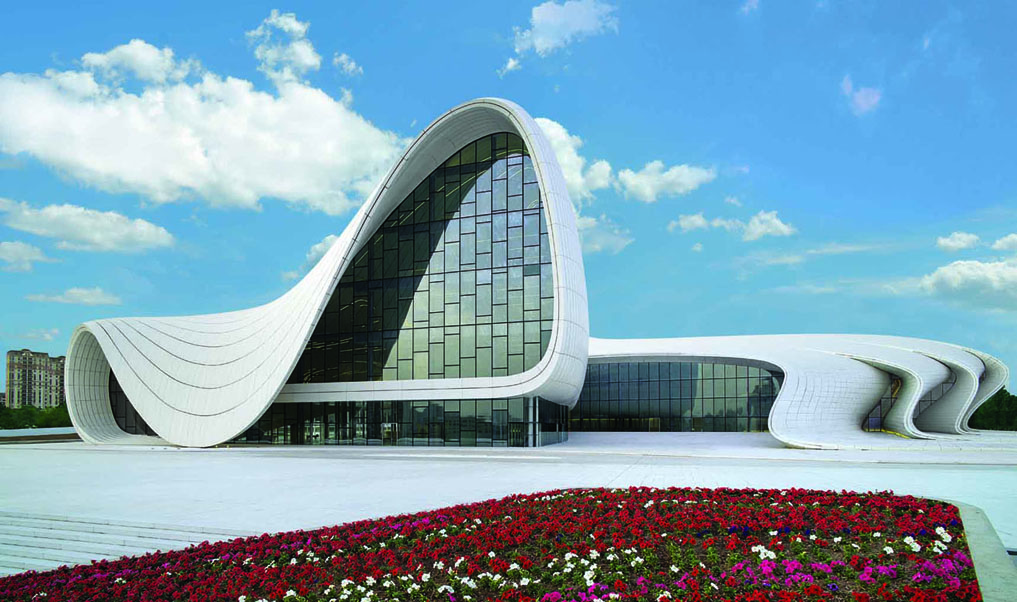 |
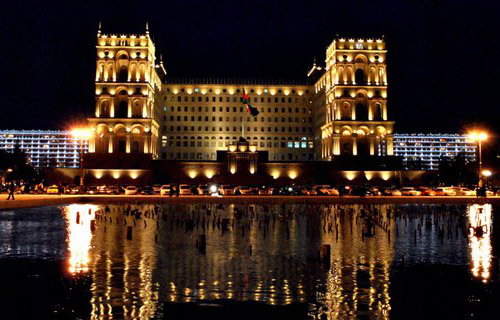 |
 |
 |






















